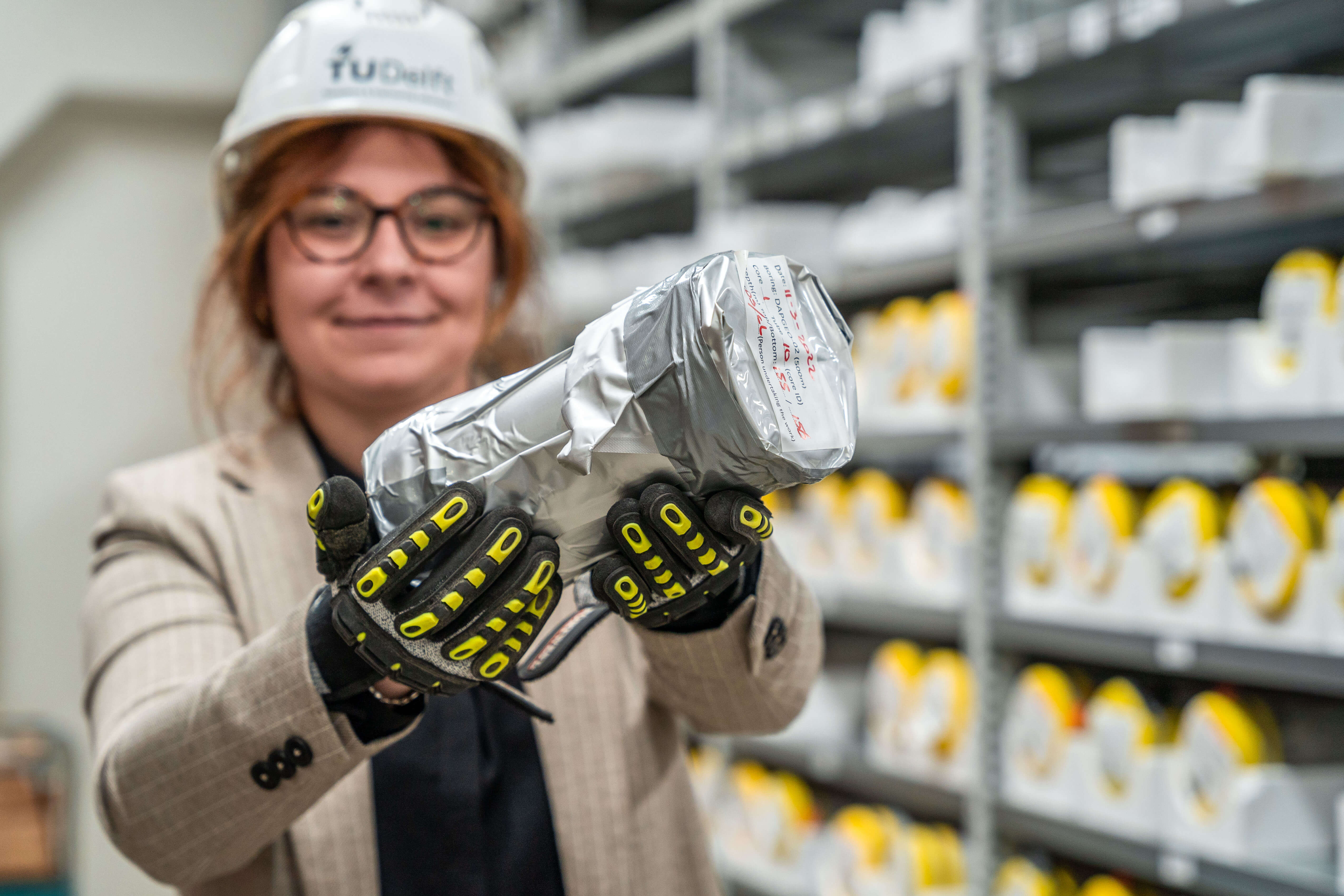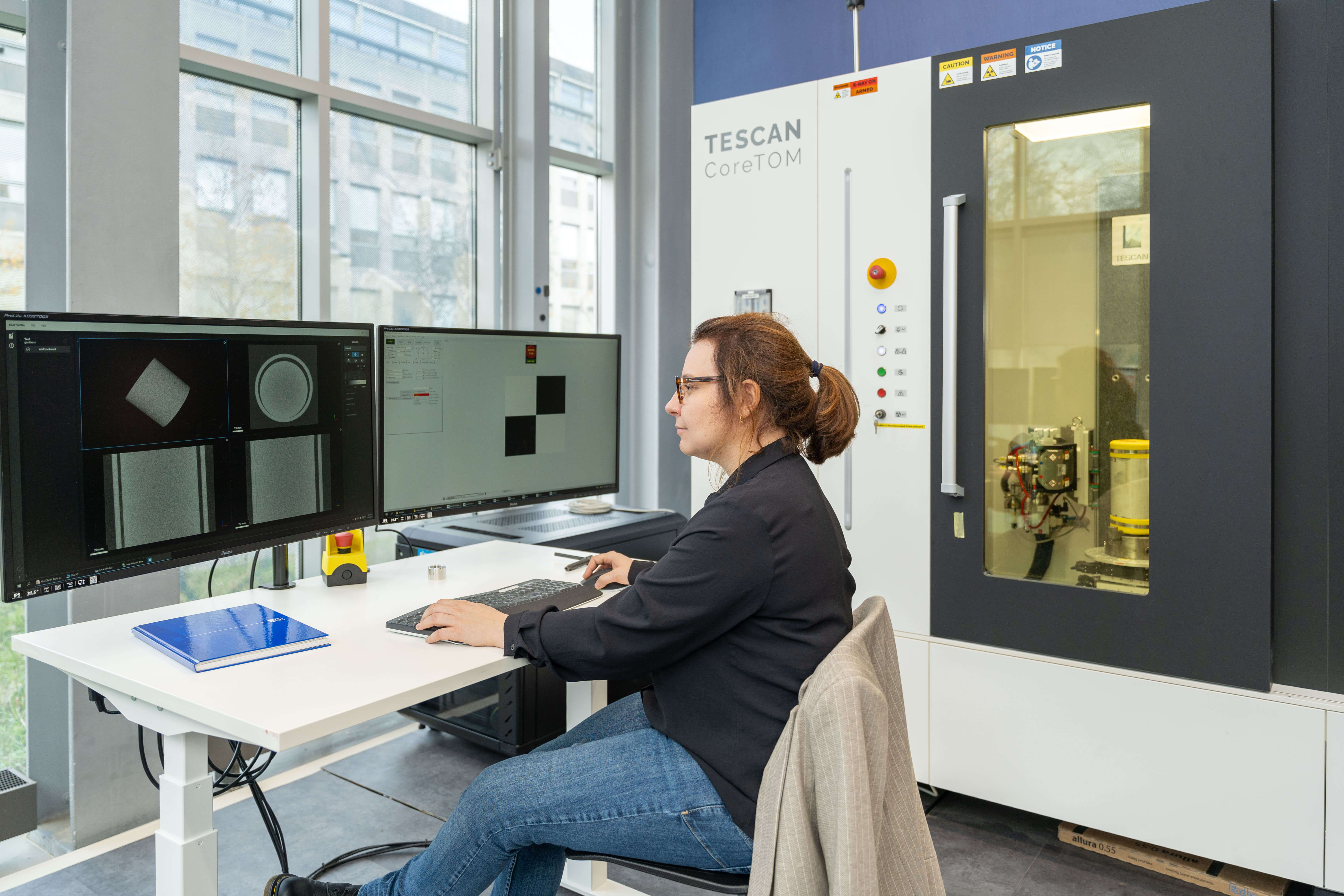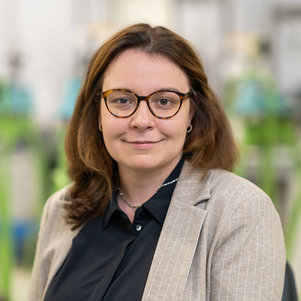The production of nuclear energy and medical isotopes, along with healthcare applications and scientific research, generates radioactive waste. This waste can be harmful to people and the environment for millennia. Therefore, it is crucial to design safe disposal facilities that can stand the test of time. Assistant Professor of Multiphysics Geomechanics at TU Delft Anne-Catherine Dieudonné is currently investigating the possibilities of disposing radioactive waste in the deep subsurface, using clay samples from geological layers that have never been studied before.
In the cellar of the CEG faculty building Anne-Catherine Dieudonné keeps a fridge with row upon row of tubes which play a vital role in her research into the safe long-term disposal of radioactive waste. Not to worry: the tubes do not contain radioactive material, but samples taken from clay layers four hundred metres below ground. They are wrapped in several protective layers to prevent the clay’s properties from being affected by their exposure to above-ground conditions. Dieudonné: “A thick, stable layer of clay may be a good environment to dispose radioactive waste.”
Underground tunnel system with disposal spaces
Although, according to current Dutch policy, disposal of radioactive waste in the deep underground is not planned before 2130, Dieudonné has an idea of what it would look like. “You have to think of an underground network of galleries leading to disposal spaces. The tunnel system would be supported by very thick concrete walls. How thick exactly would depend on the properties and state of stress of the geological layers. The network would be sealed off after several decades of operation, so that the waste will be designed to remain there forever and never do any harm.”
A place where no one will ever have to go again
Long-term disposal in Dieudonné’s field of research does not mean a couple of decades or even centuries. “We are talking hundreds of thousands of years. That is how long part of the radioactive waste releases radiation. So, we need to dispose it in a place where no one needs to set foot ever again.” Currently, the waste is stored in specially designed buildings at COVRA. This is safe now, but is not a long-term solution. “We will be looking for places without anything of value and where people, including the next few hundred generations, won’t want to go.”
Chances are that any disposal facility will be situated at great depth, she says. “This means there is a lot of material between the waste and people, which helps a lot. However, we are still finding out about the properties, behaviour and variability of such clay formations.” The earth layers that Dieudonné is exploring are situated at a depth of 400 metres and are some 30 million years old. These clay layers have never played a significant role in any commercial activity, including the search for geothermal energy or gas extraction. While drilling with these ends in view resulted in a large amount of data, clay, on the other hand, was never thought to be of particular interest and no data were collected.
Clay as outstanding candidate
There are several reasons why clay would top other deep geological layers as a candidate for disposing of radioactive waste, Dieudonné says. “In the first place, clay combines low permeability with high sorption capacity. That is important because that will prevent the waste from spreading underground and contaminating layers dedicated to other activities, such as the extraction of drinking water. Clay is self-sealing, so that fractures created by the excavation of tunnels seal off. And clay, finally, is not a material which is of economic interest.”
At the Geoscience and Engineering lab Dieudonné and two PhD candidates are testing clay samples. “We are focusing here on properties that affect the stability of tunnels, such as stiffness and strength – and how these may change over the long timeframes a disposal facility will be functioning. In another project, we concentrate on the self-healing properties of clays. For that, we have to go about testing the cores as meticulously as we can because we want to keep them in their protective casings for as long as possible. These cores are so unique that we need a well-thought-out strategy before we can examine each cubic centimetre. To spoil them and then having to drill for new samples would be very expensive indeed.” Based on her findings Dieudonné then creates numerical models which are used to predict the behaviour of the disposal facilities in the future.
It will take several decades to actually build a disposal facility but we need to plan and budget for it now.
Research that can influence decision-making
Policymakers are very interested in the kind of research she is doing, Dieudonné says. Current Dutch policy is aimed at having a geological disposal facility up and running by 2130. “It will take several decades to actually build a disposal facility but we need to plan and budget for it now,” Dieudonné says. It is essential to carry out research now to ensure a safe and techno-economically feasible final repository in the future. The question of the long-term management of radioactive waste is high on the political agenda at the moment, partly due to the EU taxonomy for sustainable activities. This motivates substantially shortening the time period by which disposal of some waste types should be implemented. This makes Dieudonné’s research all the more important for politics and society as informed decisions will have to be made in future.
Transferring knowledge to future generations
Dieudonné won’t be around when the Netherlands opens its first disposal facility for radioactive waste, but that is not something that concerns her. “It’s far more important that we acquire new fundamental knowledge and pass it on to the next generations. Research into radioactive waste management is very exciting. The stakes are extremely high, and you need to understand the evolving physical phenomena and processes very well. That is why I try to interest students and researchers in this scientific challenge and societal responsibility. So they can build on the knowledge that we are gathering now and hand over their insights to the next generation.”
Projects and research partners
Dieudonné is leading several research projects in the area of geological disposal of radioactive waste. Her research into the behaviour of clays from the DAPGEO-02 borehole is part of the NWO-funded SECUUR (Safe Environment for Clay Underground Repository) project which started in 2023. She also contributes to EURAD, a European research programme on radioactive waste disposal. In 2019, the NWO awarded her a Veni science grant to explore the self-healing capacity of clays. Her research partners include COVRA (Central Organisation for Radioactive Waste), ANVS (the Authority for Nuclear Safety and Radiation Protection), TNO, and several parties from abroad. Earlier, Dieudonné worked on the French and Swiss radioactive waste management programmes, two of the most advanced national programmes.





![[Translate to English:] [Translate to English:]](https://filelist.tudelft.nl/_processed_/5/e/csm_Header_2000_20a705c3a1.png)
![[Translate to English:] [Translate to English:]](https://filelist.tudelft.nl/CiTG/Onderzoek/Stories%20of%20Science/Geoscience%20%26%20Engineering/Een%20aardwarmtebron%20voor%20onderzoek%20op%20de%20campus/phil-on-mount-4.gif)
